Yaohua Zang
DGNO: A Novel Physics-aware Neural Operator for Solving Forward and Inverse PDE Problems based on Deep, Generative Probabilistic Modeling
Feb 10, 2025Abstract:Solving parametric partial differential equations (PDEs) and associated PDE-based, inverse problems is a central task in engineering and physics, yet existing neural operator methods struggle with high-dimensional, discontinuous inputs and require large amounts of {\em labeled} training data. We propose the Deep Generative Neural Operator (DGNO), a physics-aware framework that addresses these challenges by leveraging a deep, generative, probabilistic model in combination with a set of lower-dimensional, latent variables that simultaneously encode PDE-inputs and PDE-outputs. This formulation can make use of unlabeled data and significantly improves inverse problem-solving, particularly for discontinuous or discrete-valued input functions. DGNO enforces physics constraints without labeled data by incorporating as virtual observables, weak-form residuals based on compactly supported radial basis functions (CSRBFs). These relax regularity constraints and eliminate higher-order derivatives from the objective function. We also introduce MultiONet, a novel neural operator architecture, which is a more expressive generalization of the popular DeepONet that significantly enhances the approximating power of the proposed model. These innovations make DGNO particularly effective for challenging forward and inverse, PDE-based problems, such as those involving multi-phase media. Numerical experiments demonstrate that DGNO achieves higher accuracy across multiple benchmarks while exhibiting robustness to noise and strong generalization to out-of-distribution cases. Its adaptability, and the ability to handle sparse, noisy data while providing probabilistic estimates, make DGNO a powerful tool for scientific and engineering applications.
Weak neural variational inference for solving Bayesian inverse problems without forward models: applications in elastography
Jul 30, 2024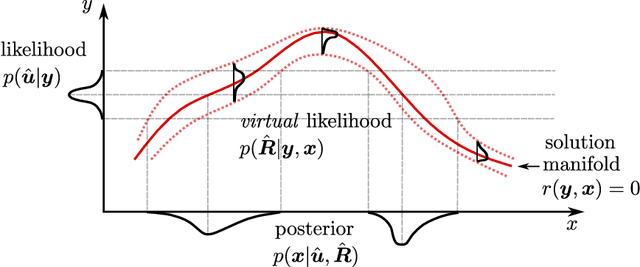
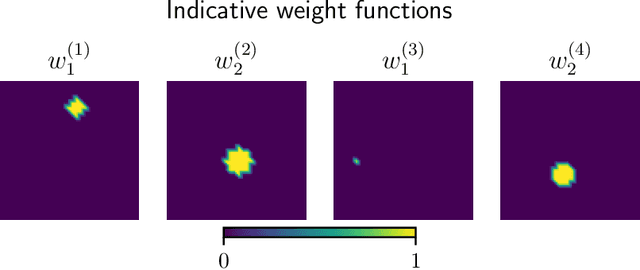
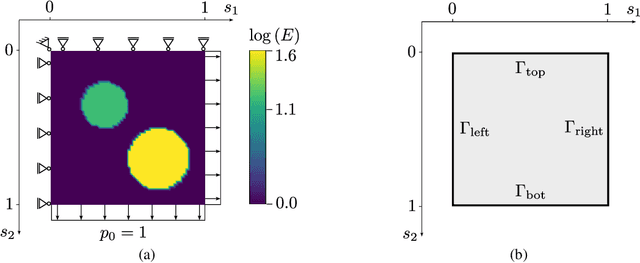
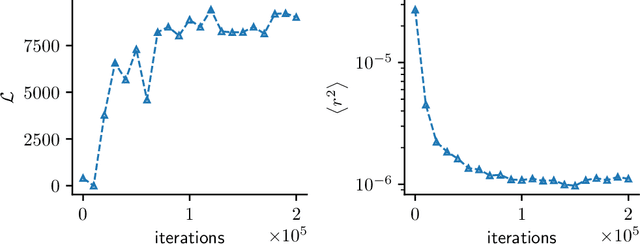
Abstract:In this paper, we introduce a novel, data-driven approach for solving high-dimensional Bayesian inverse problems based on partial differential equations (PDEs), called Weak Neural Variational Inference (WNVI). The method complements real measurements with virtual observations derived from the physical model. In particular, weighted residuals are employed as probes to the governing PDE in order to formulate and solve a Bayesian inverse problem without ever formulating nor solving a forward model. The formulation treats the state variables of the physical model as latent variables, inferred using Stochastic Variational Inference (SVI), along with the usual unknowns. The approximate posterior employed uses neural networks to approximate the inverse mapping from state variables to the unknowns. We illustrate the proposed method in a biomedical setting where we infer spatially varying material properties from noisy tissue deformation data. We demonstrate that WNVI is not only as accurate and more efficient than traditional methods that rely on repeatedly solving the (non)linear forward problem as a black-box, but it can also handle ill-posed forward problems (e.g., with insufficient boundary conditions).
ParticleWNN: a Novel Neural Networks Framework for Solving Partial Differential Equations
May 23, 2023



Abstract:Deep neural networks (DNNs) have been widely used to solve partial differential equations (PDEs) in recent years. In this work, a novel deep learning-based framework named Particle Weak-form based Neural Networks (ParticleWNN) is developed for solving PDEs in the weak form. In this framework, the trial space is chosen as the space of DNNs, and the test space is constructed by functions compactly supported in extremely small regions whose centers are particles. To train the neural networks, an R-adaptive strategy is designed to adaptively modify the radius of regions during training. The ParticleWNN inherits the advantages of weak/variational formulation, such as requiring less regularity of the solution and a small number of quadrature points for computing the integrals. Moreover, due to the special construction of the test functions, the ParticleWNN allows local training of networks, parallel implementation, and integral calculations only in extremely small regions. The framework is particularly desirable for solving problems with high-dimensional and complex domains. The efficiency and accuracy of the ParticleWNN are demonstrated with several numerical examples. The numerical results show clear advantages of the ParticleWNN over the state-of-the-art methods.
Numerical Solution of Inverse Problems by Weak Adversarial Networks
Feb 26, 2020
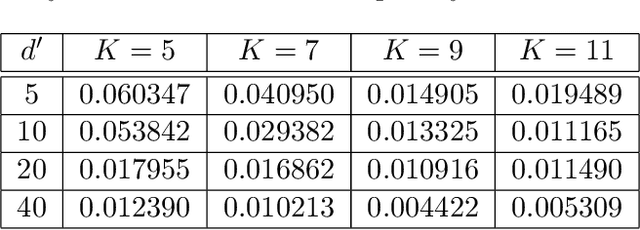

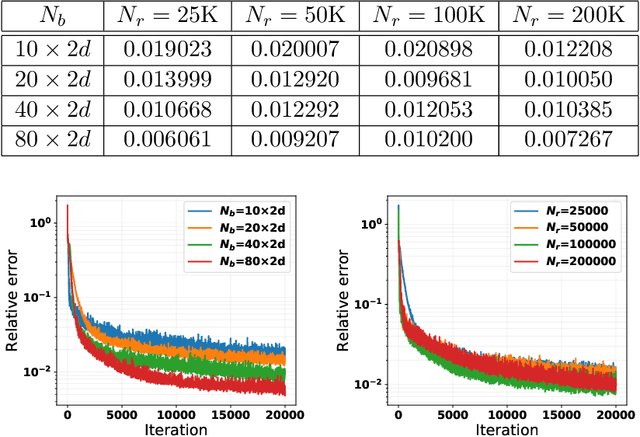
Abstract:We consider a weak adversarial network approach to numerically solve a class of inverse problems, including electrical impedance tomography and dynamic electrical impedance tomography problems. We leverage the weak formulation of PDE in the given inverse problem, and parameterize the solution and the test function as deep neural networks. The weak formulation and the boundary conditions induce a minimax problem of a saddle function of the network parameters. As the parameters are alternatively updated, the network gradually approximates the solution of the inverse problem. We provide theoretical justifications on the convergence of the proposed algorithm. Our method is completely mesh-free without any spatial discretization, and is particularly suitable for problems with high dimensionality and low regularity on solutions. Numerical experiments on a variety of test inverse problems demonstrate the promising accuracy and efficiency of our approach.
 Add to Chrome
Add to Chrome Add to Firefox
Add to Firefox Add to Edge
Add to Edge